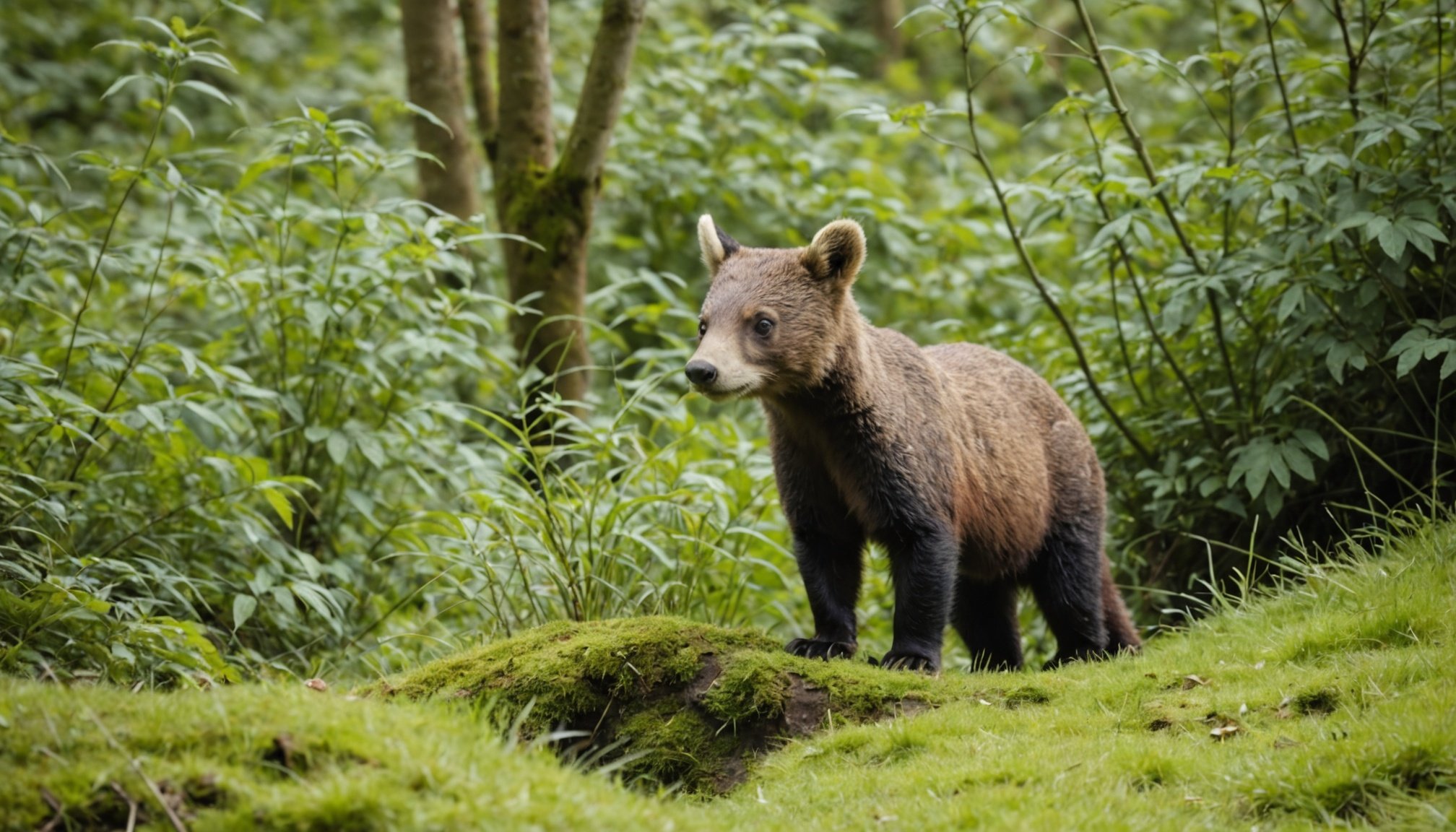Overview of Habitat Management Strategies
Habitat management is crucial for maintaining and enhancing biodiversity. It involves a range of strategies aimed at ensuring ecosystems are healthy and can support a diversity of species. The primary objective is to create optimal conditions in which various species can thrive, thereby maintaining ecological balance.
In the UK, Wildlife Trusts play a significant role in habitat conservation. These trusts are charitable organisations focused on protecting the natural environment. Their mission is to manage landscapes in a sustainable way that encourages habitat restoration and biodiversity support. By implementing diverse management techniques, they address the specific needs of different species and habitats.
Avez-vous vu cela : Exploring the UK”s Strategies for Monitoring and Combating Wildlife Disease Spread from Pets to Wild Animals
Key objectives of habitat management encompass the preservation of native species, control of invasive species, and the restoration of degraded ecosystems. Techniques such as controlled grazing, reforestation, wetland restoration, and the creation of grassland buffers are employed to support diverse wildlife populations. These strategies help in maintaining ecological networks, ensuring that natural processes are sustained and that wildlife can freely move and interact within their habitats.
By continually adapting strategies to meet the changing demands of the environment and different species, UK Wildlife Trusts contribute significantly to biodiversity conservation.
A découvrir également : The Impact of Beaver Reintroduction on UK River Ecosystems: A Deep Dive into Nature’s Engineers
Key Habitat Management Strategies Implemented
Effective habitat restoration is crucial for the conservation efforts spearheaded by UK Wildlife Trusts. These restoration techniques focus on recreating natural environments and ensuring the long-term survival of various species. By incorporating practices such as reintroducing native plants, controlling invasive species, and re-establishing natural water courses, these efforts provide essential support to local ecosystems.
Equally important are the species-specific strategies that cater to the unique needs of particular species. For instance, specialised conservation practices are developed to protect endangered species, such as the Dartford warbler or the hazel dormouse. These strategies often involve creating or enhancing specific habitat features, like hedgerows or heathland, which are critical to their survival.
Community engagement plays a significant role in effective habitat management. Local communities are actively involved in conservation practices, fostering a sense of ownership and commitment towards environmental preservation. This involvement includes educational programs, volunteering opportunities, and citizen science projects, all of which raise awareness and contribute to successful habitat management.
In summary, a combination of well-planned habitat restoration, tailored species-specific strategies, and robust community involvement forms the backbone of effective conservation efforts, ensuring that biodiversity is not only protected but thrives.
Case Studies of Successful Habitat Management
Exploring real-world success stories in habitat management offers insights into the substantial impact that ecological restoration can bring. These detailed case studies highlight effective methods and their measurable benefits to biodiversity.
Case Study 1: Coastal Habitat Restoration
Coastal habitats face threats from erosion and pollution, significantly impacting native species. A successful initiative in restoring these areas involved planting native vegetation to stabilize dunes and filtering pollutants through natural processes. This approach increased the population of local shorebirds by 30% over five years, demonstrating a positive impact assessment.
Case Study 2: Woodland Management for Birds
In the effort to enhance avian habitats, selective logging and the creation of controlled clearings were employed. These methods increased light penetration and promoted undergrowth, essential for birds like the wood thrush. This project, conducted over ten years, recorded a 25% rise in bird species diversity, showcasing effective management practices.
Case Study 3: Wetland Conservation Efforts
Wetlands serve as critical aquatic habitats, yet they are often drained for development. A reconversion strategy involved re-flooding to restore natural water levels, fostering habitats for amphibians and plants. This conservation effort reported a 40% increase in amphibian populations, highlighting the ecological restoration potential of proper wetland management.
The Role of Monitoring and Evaluation in Habitat Management
Monitoring and evaluation are crucial components in assessing the effectiveness of habitat management. These processes allow wildlife organisations, such as UK Wildlife Trusts, to gauge the success of their management strategies and make informed decisions. By utilising various monitoring techniques, these organisations can accurately evaluate ecological changes and impacts.
Monitoring Techniques
UK Wildlife Trusts employ several monitoring techniques aimed at conducting detailed ecological assessments. Techniques such as wildlife surveys, remote sensing, and GIS mapping provide insights into species population and habitat conditions. These tools not only help in tracking progress but also in identifying emerging threats to the ecosystem.
Adaptive management plays a significant role in conservation, as it is a dynamic approach informed by monitoring data. This strategy involves adjusting management interventions based on real-time information gathered through monitoring activities. By analysing the data, managers can adapt their methods to changing conditions, ensuring management practices remain relevant and effective.
In conclusion, effective ecological assessment through the use of varied monitoring techniques supports adaptive management. This ensures that habitat management strategies remain flexible and responsive, ultimately enhancing their capacity to achieve conservation objectives.
Collaboration and Partnerships in Habitat Management
Effective habitat management requires a collective approach, encompassing local communities, NGOs, and government bodies. These partnerships are crucial to enhance habitat management strategies and ensure sustainability.
Local Communities and NGOs
Involving local communities in habitat management instills a sense of responsibility and guardianship over local resources. Collaborations with NGOs provide access to expertise and resources that might otherwise be inaccessible. For example, several NGO-led projects have successfully restored endangered habitats by engaging communities in restoration activities and educational programs.
Government Body Engagement
Involving government bodies is essential for aligning habitat management efforts with national policies and regulations. These partnerships often facilitate access to funding and other resources critical for large-scale conservation projects. For instance, government participation in habitat management can lead to the establishment of protected areas, backed by legislation.
Stakeholder Engagement Benefits
Engaging stakeholders fosters sustainable practices by merging diverse interests and expertise. Such collaboration often results in innovative approaches to conservation, balancing ecological needs with socio-economic concerns. Stakeholder engagement also promotes transparency and accountability in decision-making processes, crucial for long-term success.
In conclusion, effective partnerships play a pivotal role in advancing sustainable habitat management, ensuring ecological and social benefits for future generations.
Future Directions in Habitat Management
As the world continues to evolve, sustainable practices and biodiversity policies play a crucial role in habitat management. Emerging trends focus on innovative techniques that ensure the continuous health and resilience of ecosystems. One such trend includes the integration of future strategies that aim to combat environmental changes and safeguard species diversity.
In recent years, there’s been an increased emphasis on implementing biodiversity policies that promote the preservation and restoration of natural habitats. These policies guide the development of long-lasting strategies, ensuring that management efforts are aligned with ecological requirements. By maintaining this focus, habitat management can adapt to the changing environmental landscape, fostering resilience among diverse species.
Innovations in technology also present exciting opportunities for habitat management. From drone-based monitoring systems to advanced data analytics, these tools enable more precise and effective management practices. Such advancements help in crafting sustainable practices that minimise human impact while maximising the benefits for natural ecosystems.
Embracing emerging trends and leveraging cutting-edge technology are essential steps toward a resilient future for habitat management. By doing so, we ensure that our actions today contribute to a thriving environment for generations to come, supporting the long-term well-being of diverse species.











